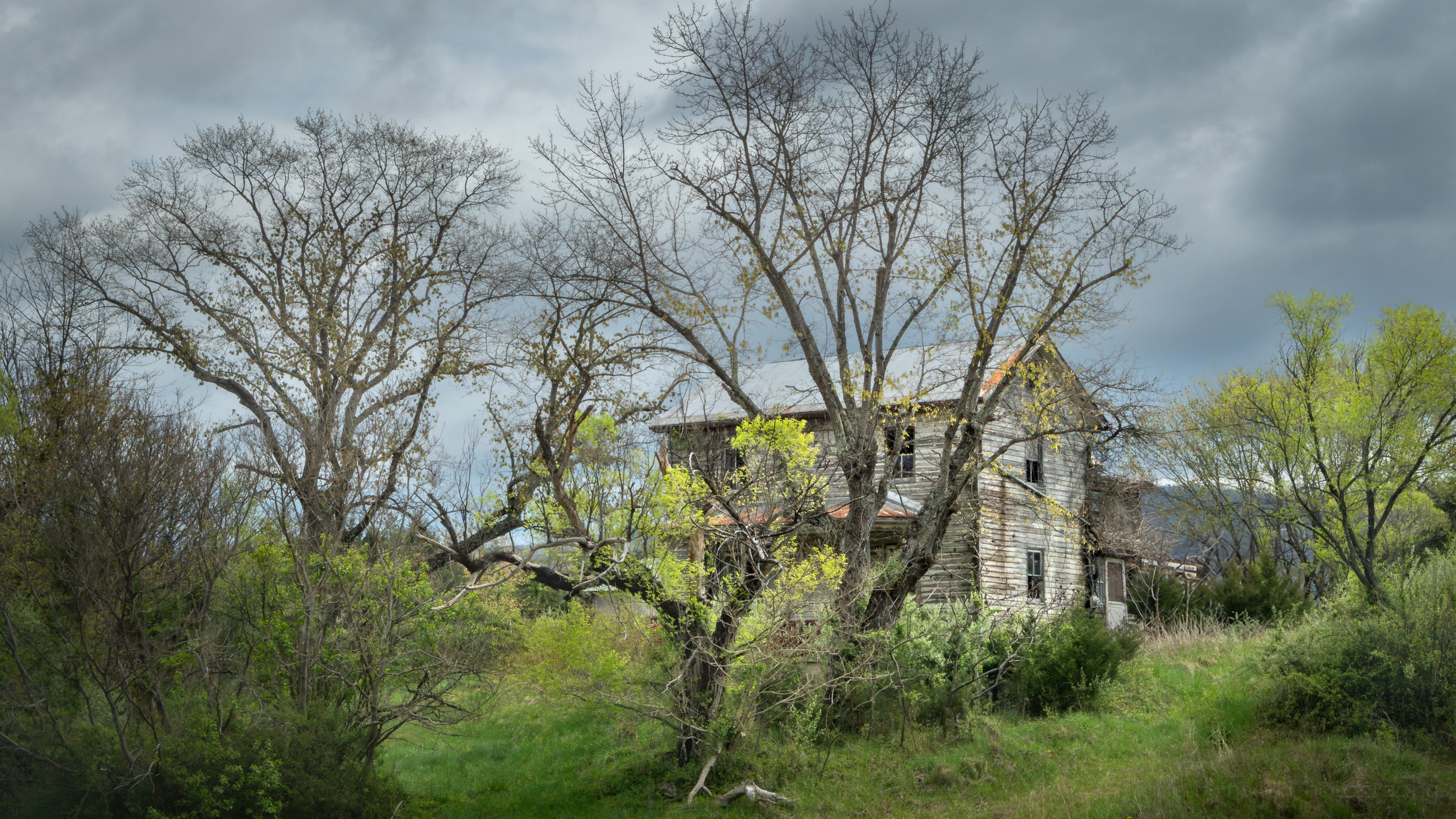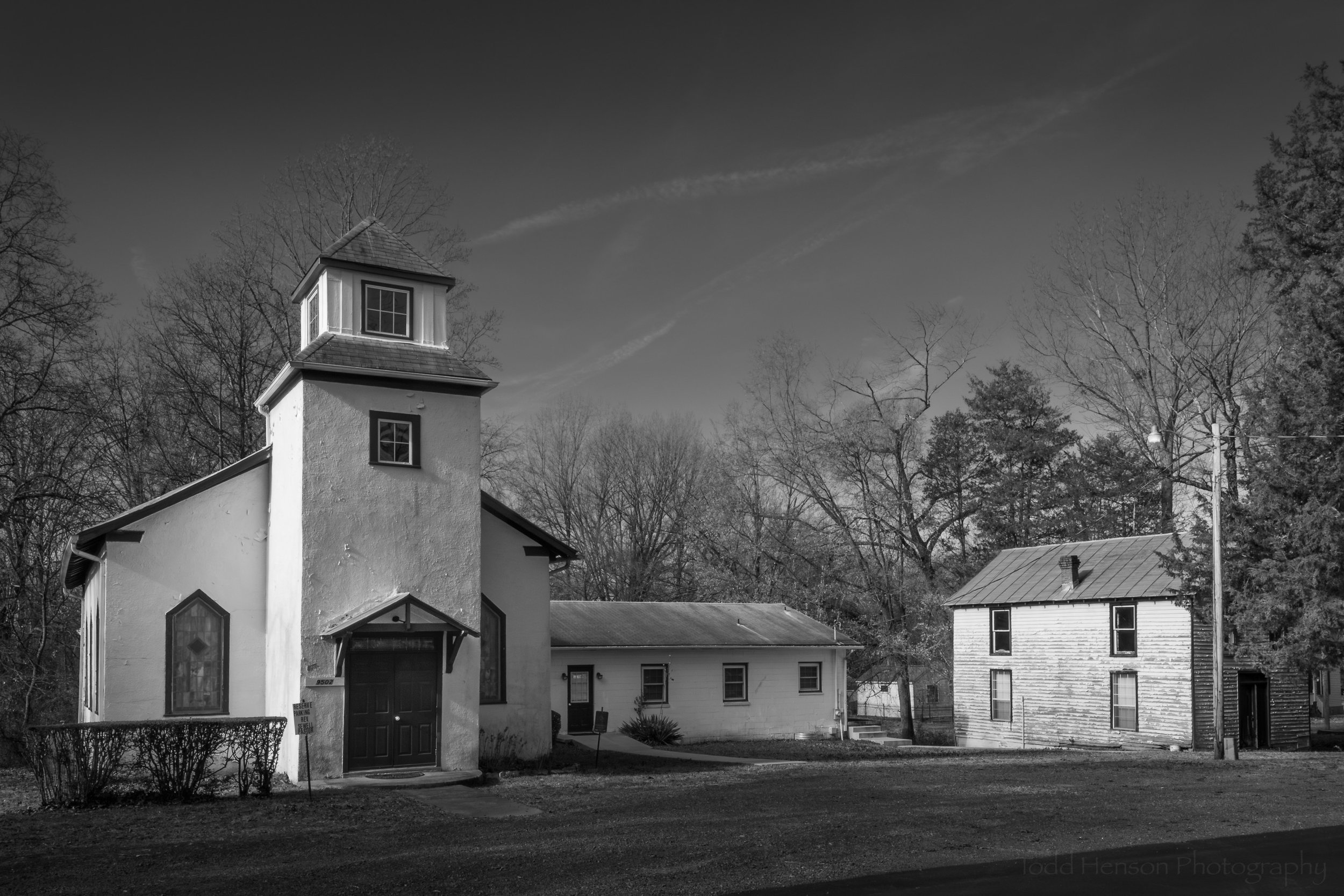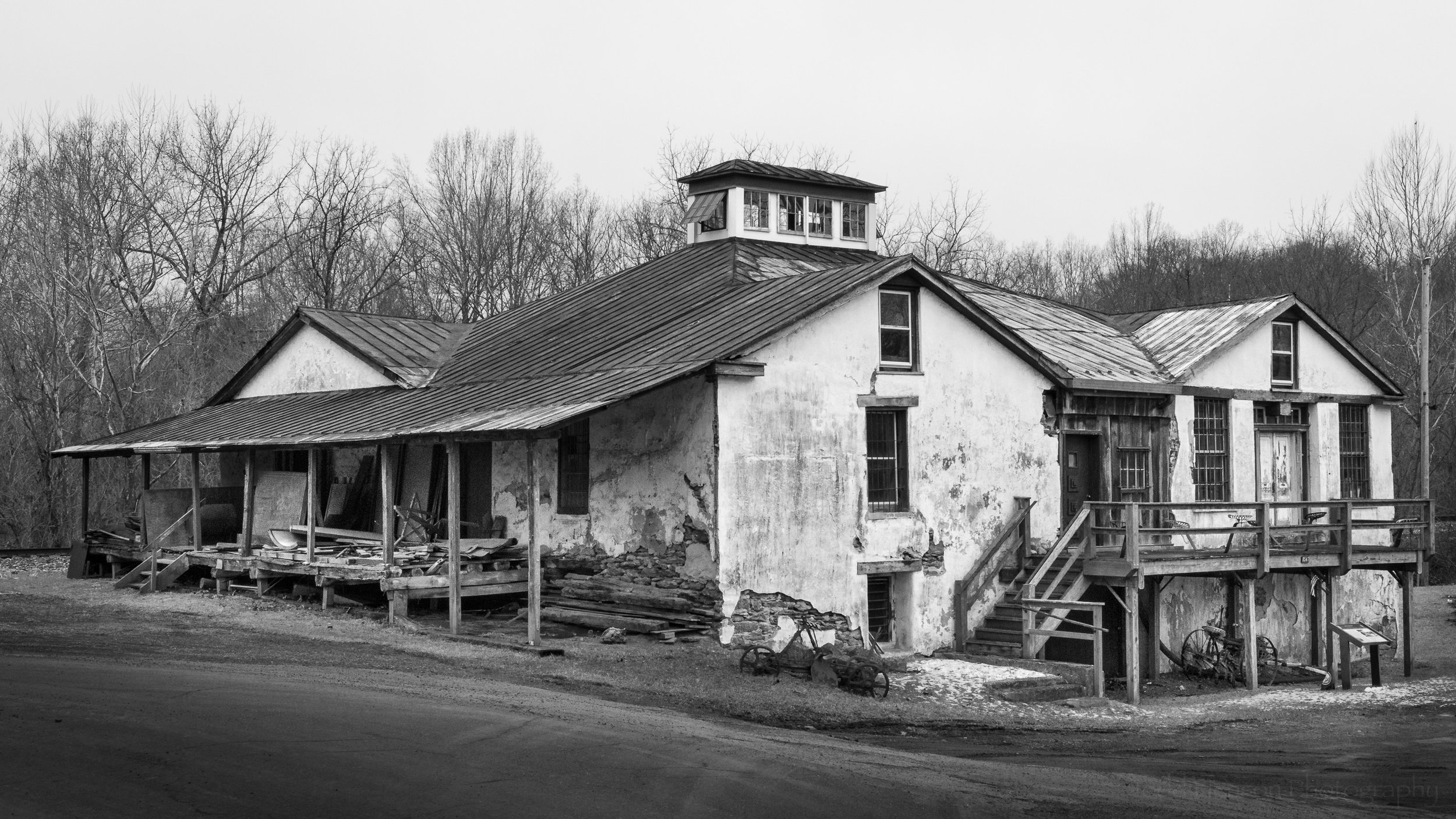Rector’s Warehouse and Station
Built around 1835, it started as a warehouse and store and later, around 1852 was expanded to include a railway station and post office with the arrival of the Manassas Gap Railroad. During the Civil War it was used as one of Colonel John S. Mosby’s headquarters and a prison for captured Federal troops and still contains traces of graffiti from the prisoners inside.
The railroad and Rector’s Warehouse
An informational sign at the location mentions two notable events that occurred in the vicinity. On November 7, 1862, General George Brinton McClellan received orders from President Abraham Lincoln relieving him of his command. He was handed these orders by General C.P. Buckingham, and afterwards General Ambrose Burnside was given command of the Army.
Rector’s Warehouse and Station still stands
The second event involved Colonel Mosby, whose rangers roamed all over this area fighting Union soldiers. Seven of his rangers had been executed. In return, on November 6, 1864, Mosby ordered the execution of an equal number of Federals from the 27 prisoners held in the building. They were selected via a raffle with a bit on an ironic twist in that when a drummer boy was selected an officer pleaded for another drawing to replace the boy. That officer ended up being chosen instead. Apparently, the officer and three of the others survived while the final three were hanged.
A side view of Rector’s Warehouse and Station
Rectortown, where this is located, was established in 1772 and is the oldest town in Fauquier County, Virginia. It was named after the merchant John Rector, who owned the land that formed the original village.
Doors and windows
Window and door
A window into Rector’s Warehouse
Do you enjoy these posts?
Sign up to receive periodic emails with updates and thoughts. Don’t worry, I won’t spam you. And please consider purchasing artwork or products from my online store, and using my affiliate links in the sidebar to the right when shopping online.
I appreciate your support!











